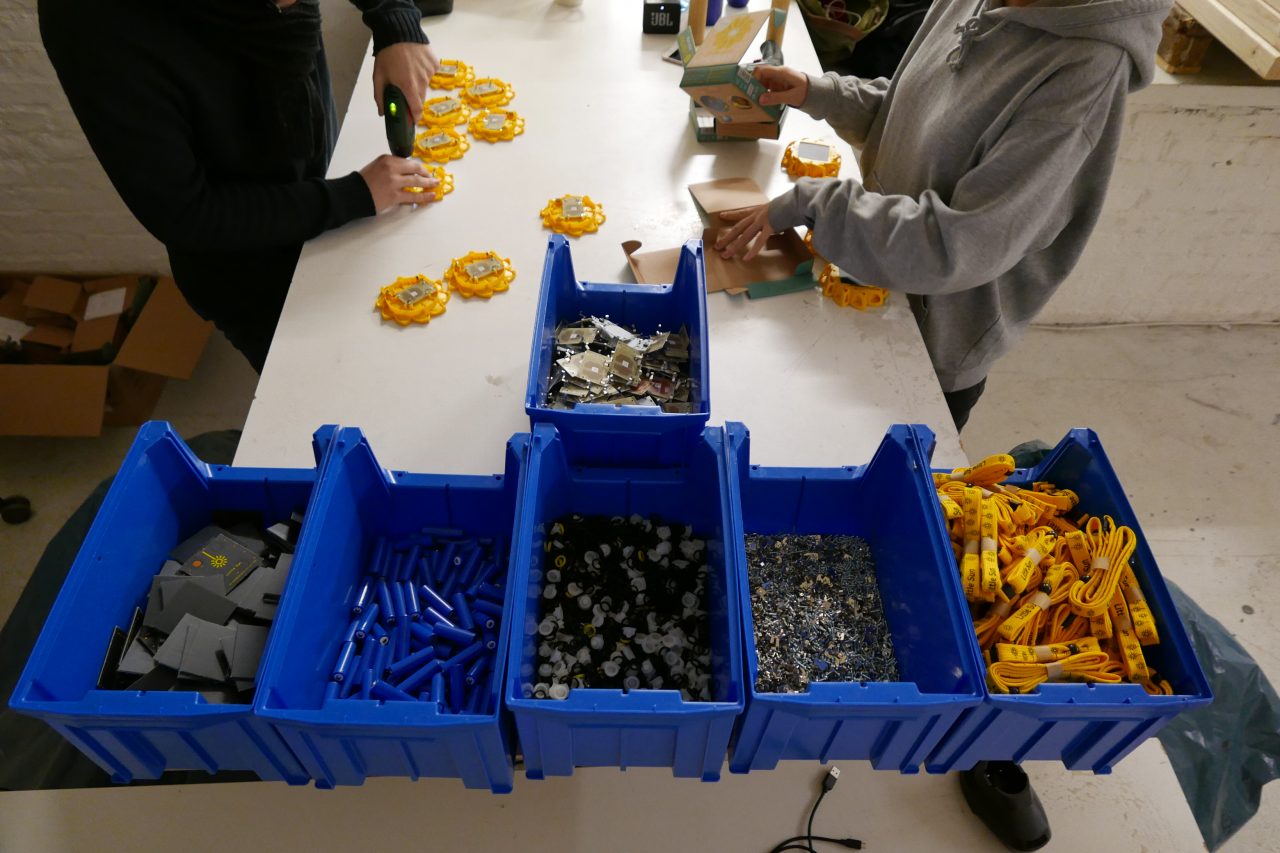Little Sun and Materials Part 1: The Plastic
One of the most frequently asked questions Little Sun receives is: Why is Little Sun made from plastic? The short answer is: Because there is no alternative yet which meets our high-quality needs. But we are looking into sustainable material alternatives and conducting research and design (R&D) projects with different companies to see what the future holds. Here’s an overview:
The ideal material for our Little Sun is a material that is as flexible and durable as plastic but is also biobased and biodegradable. This means that the product must not only be derived from renewable energy sources but also biodegrade ideally in common, natural environments like your backyard. So do we have to look for an entirely different material to do this or can plastic be biobased and biodegradable?
The answer is yes! Plastic can be biobased and biodegradable and Mango Materials are one company that has figured out how. Mango Materials have developed a biodegradable polymer derived from waste biogas emitted from wastewater treatment plants and/or landfill. This biodegradable polymer can be transformed into a number of plastic goods such as electrical casings, shampoo bottles, and children’s toys making it one of the most versatile biobased, biodegradable plastics on the market. One of the things that make their plastics so unique is the fact that they can break down naturally in your backyard compost or in environments with no oxygen.
This is unique because it is not something that all biodegradable materials can do. Polylactide (PLA) plastic, for instance, is a biodegradable plastic a lot of us might have heard of and it, like so many other biodegradable plastics, can only biodegrade in a very specific environment known as industrial composting. Although PLA is better than regular Petroleum-based plastics, if this product is not disposed of properly it will never be industrially composted and the plastic will remain in the environment unable to breakdown. We experience the same problem with recyclable petroleum-based plastics. If they don’t make it into the right bin they don’t get recycled. Additionally, due to the insurmountable ways to produce plastic a lot of the plastics produced cannot even be recycled, which is one of the reasons why over 6.9 billion tons of the 9.2 billion tons of plastic produced has become waste, and why only 9% of all plastic ever manufactured has been recycled.

So why haven’t we started production with Mango Materials yet and why is there not a biobased, biodegradable Little Sun? The reality is that Mango Materials are still in the early stages of their growth and do not have the infrastructure just yet to be able to produce our plastic shells on a large scale. So what should we do in the meantime?
Well, what if we used some of the plastic currently floating around in our oceans? There are a few projects combatting the ocean plastic problem by collecting and recycling plastics from the beach or directly from the ocean. And it is a good thing they are doing this because there are over 8 million tons of plastic in the ocean and something needs to be done with it. So why not recycle it and reuse this waste material, so-called ‘Ocean Plastic’?
We are in the process of testing several prototypes developed from ocean plastic and whilst the tests look promising the chemical composition of the plastic is a challenge. Many of the plastics found in the ocean contain various toxic, flammable chemicals, which are not only bad for the environment but also the people potentially touching the products containing those elements. Little Sun, of course, wants to assure the solar lamps we sell are safe to use, for children and adults alike. This is why we get our products certified by external partners. Those certifications are difficult to get however when you are using Ocean Plastic because the products will most likely have a different composition of plastic parts and it is hard to assure none of the plastics used are non-toxic and non-flammable as it is plastic from all over the world mixed together somewhere in the ocean. We will continue with tests however in the hope that we can find a solution.
In the meantime, we are looking into recycling broken Little Sun lamps. In a first pilot partnering with Konglomerat, Little Sun’s plastic shells were melted to make little foosball players. The results are not yet as robust as we would like them to be, but the team is continuing testing. Moreover, we hope to work on other projects, exploring ways to make other useful products from our plastic shells to extend the life of our products.
Other companies doing great things in terms of recycling materials or developing completely new materials include: Seljak, Crafting Plastics, Stone Cycling, Desintegrame, Red Mud, Luma, Ecovative, Local work studio, Biomason, Studio Swine, Klarenbeek and Dros, Precious Plastic and many, many more.
If you have ideas or know any other cool companies doing good things in the material world please email ilove@littlesun.com.
We will continue selling our Little Sun products bringing light to those that live in darkness, whilst searching for better material alternatives. Would you like to help us spread solar love and light?
or
Photo credits top carousel:
Inter IKEA Systems B.V. 2019 (Photo: Little Sun)
The Expanded Studio, 2019 (Photo: Anders Sune Berg)
© 2019 Olafur Eliasson
Manchester workshop, 2019 (Photo: Little Sun), Museum of Science and Industry, Manchester
Photo credits bottom carousel:
Foosball players, 2019 (Photo: Konglomerat)

